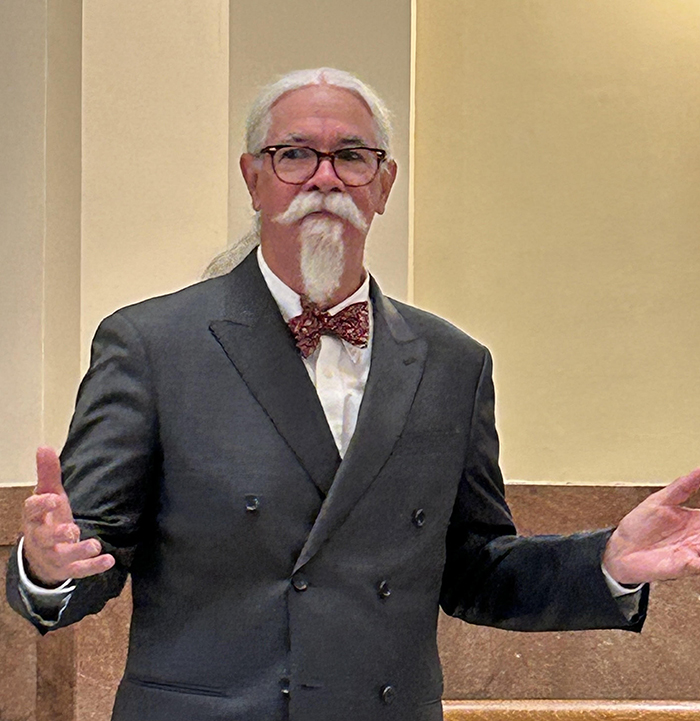County residents tour our historic courthouse
News | Published on September 20, 2023 at 3:03pm GMT+0000 | Author: Tucker Henderson
0
Retired County Attorney David Hauser spoke on Sept. 8 during tours of the county courthouse.
By Tom Hintgen
Otter Tail County Correspondent
Otter Tail County, in order to celebrate the art of muralist Charles Holloway, hosted courthouse tours in Fergus Falls on Friday, Sept. 8. County residents toured and revisited the works of Holloway and discovered other artistic details of the building.
Holloway was an Illinois native who studied at the Art Institute of Chicago and the Academie Julian in Paris, France. He began his career in the late 1800s as a painter of portraits and landscapes and later turned to murals.
Holloway painted four murals on canvas, now glued to the rotunda’s ceiling inside the county courthouse. These murals can be seen today as visitors gaze at the stained-glass dome.
The current courthouse, completed in 1922 just south of downtown Fergus Falls, has paintings of all the townships of Otter Tail County. The courthouse is four stories tall and has a total of 47,000 square feet of space.
The exterior of the building is made of limestone and terracotta (porous clay). The interior of the building is decorated with marble, wood and stained glass.
The Otter Tail County Courthouse is listed on the National Register of Historic Places. Visitors are welcome, but they must enter through the north door and pass through a security checkpoint.
A brief history of Otter Tail County
Otter Tail County was organized in 1868 following a state legislative act.
The first group of non-Native American settlers, Cutlerites, came to Clitherall Lake in the spring of 1865 to become permanent settlers. About 35 men, women and children made the trip from Manti, Iowa, on May 6. A second group arrived on July 31.
This was seven years after Minnesota became a state, in 1858, and three years prior to Otter Tail County becoming established.
The second permanent settlement in the county was established in 1866 in Otto and Rush Lake townships, now what’s north of Ottertail city and south of Perham. The leader was a German Catholic priest, Fr. Joseph Albrecht.
The third permanent settlement took place in 1871, in what’s now Western Township, west of Dalton in the extreme southwestern section of Otter Tail County. A group of people from New York had first intended to settle in the northern section of the county but later opted for the southern section of Otter Tail County.
Otter Tail County was a prime destination during the post-Civil War westward migration. Among the immigrants were Scandinavia farmers.

